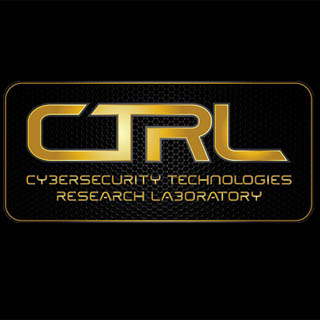
Sandia/California’s new Cybersecurity Technologies Research Laboratory (CTRL) now offers an open yet controlled area for cybersecurity professionals from the Bay Area and across the country to meet and discuss critical cyber research issues.
A grand opening for the facility, which resides on the grounds of the Livermore Valley Open Campus (LVOC) and is part of
Sandia’s Cyber Engineering Research Institute (CERI), was held June 12.
During the ribbon-cutting event, Rep. Jerry McNerney (D-Stockton) talked about the growing national issue of cybersecurity and said CTRL will “bring together a tremendous amount of talent and synergy” from Sandia, neighboring Lawrence Livermore National Laboratory, academia, and industry.
Other speakers at the event included executive vice chancellor Ralph Hexter from the University of California-Davis, Livermore Chamber of Commerce president and CEO Dale Kaye, and Sandia’s Div. 8000 VP Rick Stulen and Center 8900 Director Len Napolitano. Following the remarks, guests visited workstations staffed by students from the Center for Cyber Defenders (CCD) and other Sandia researchers, learning about cyber-related project themes such as malware, cell phone tracking, and supply chain security.
“With CTRL, we can run experiments and talk more freely about a wide range of cyber research activities, and we can do so with a variety of US and international collaborators but without some of the unrelated restrictions that are often associated with a national laboratory,” says Jim Costa (8950), senior manager of computational sciences and analysis at Sandia/California.
“At the same time, we can do these things in a uniquely controlled environment where we know what activities are taking place and we can monitor who and what else is in the building,” Jim says. “We look at CTRL like our own neighborhood hangout for Sandia and visiting cyber professionals who need an open but secure place to meet and collaborate.” CTRL will also, as part of CERI, support research initiatives like the Cyber Sciences Laboratory (CSL), a joint DOE and NNSA initiative to drive cyber security research for NNSA and DOE missions.
Broadly, CTRL will promote stronger relationships among industry, academia, and national laboratories in the research and development of cybersecurity solutions through technology, practices, and policy. Specifically, CTRL aims to:
- Develop the science and computing foundation necessary for robust cyber security research and development.
- Develop critical relationships to help understand the full range of technical threat concerns facing industry, government (non-classified), and academia.
- Develop, test, and help implement cybersecurity approaches in real-world situations.
- Promote the various technical domains that support the advancement of cybersecurity, essential to the security and stability of the US and the world.
- Develop political and social awareness of the imminent threat and consequences posed by cyber exploits and attacks.
- Provide a window to the external world on open cybersecurity and related work throughout Sandia, along with acting as a Bay Area resource for open work performed at Sandia/New Mexico.
Sandia has a decades-long history in cybersecurity, Jim says, the origins of which lie in the Labs’ nuclear weapons program. Most recently, it has received accolades for its successful Center for Cyber Defenders (CCD) program, which has trained hundreds of college students in cyber defense and has seen many go into private industry and government to tackle cybersecurity issues. This summer’s Sandia/California CCD interns are housed in the CTRL facility.
As a national security laboratory, Sandia needs to remain active in the cybersecurity arena, says Jim, and Sandia/California is well-positioned to offer a facility like CTRL to Silicon Valley interests, federal and local government, and companies from around the country that need it the most. Virtually every company and organization in existence has issues with privacy, supply chains, exfiltration of intellectual property, malware, and communications, so places where scientists, engineers, and cyber analysts can gather openly yet securely have become critical.
“The Bay Area is a hotbed for social media and computer companies of every type, and every product or service being developed today must be reliable and resilient,” Jim says. “Any of it can be attacked by our adversaries, so the more we can facilitate technical discussions with our cybersecurity brethren, the better.”
Access to CTRL, he says, is very flexible, so some non-Sandia personnel could conceivably come for an afternoon or day, stay a week or more, or even have an office set up for long-term use.
In addition to its Center for Cyber Defenders students, the CTRL facility houses a number of Sandia cyber programs funded by multiple sources and is beginning to provide office space for academic and industrial partners. Jim says he envisions even more CTRL users in the coming months and years, potentially from collaborators Sandia hasn’t even begun to work with. He also sees the facility as an important contributor to workforce development.